Chances are, you receive anywhere from one to a dozen emails a day from companies promising to make your life better through the power of artificial intelligence (AI). But it’s rare for these companies to actually explain how this technology is used as part of their service, or even what it does.
If you find yourself confused about how this technology can actually help you in the real world, you’re not alone. The term “artificial intelligence” is applied to many different types of technology interchangeably (much of which is not actually AI), referring to everything from algorithms that autocorrect spelling on your phone or filter and categorize your emails by topic automatically, to Large Language Models (LLMs) that perform tasks like composing text, creating images, and writing computer code. Knowing what kind of AI tools a system uses on the back end, how the AI performs its work (where does your data go? Is it used to train other models? Is it kept safe end-to-end?), and what it’s meant to do can help you understand whether that tool is right for you.
Over the past couple of years, Tenstreet has introduced AI functionality into our dashboard to improve the lives of our clients. These tools started off by saving carriers time spent addressing driver questions and have evolved to identify your most interested applicants, flag expired or incomplete documentation that needs attention, and so much more, with new functionality being developed all the time.
We’ve built this technology in a unique way just for carriers, and we think it’s important that you understand exactly where and why we’ve decided to incorporate it so you can use it to its fullest. Read on for a detailed overview of Tenstreet’s AI and how it’s designed to help you operate more efficiently.
What Actually Is AI?
AI is software that uses specific technology to perform tasks that historically required human intelligence such as learning, problem-solving, decision-making, and perception, often without direct human oversight.
AI programs are probabilistic, meaning they use complex math and oceans of data to arrive at answers, but their probabilistic nature comes with consequences. When implemented without appropriate guardrails or experience, AI may sometimes return results that are unexpected or incorrect. The companies that make this software must exercise great care in AI design, and people who want to use AI must weigh and manage these risks.
The simplest programs use Narrow AI, programs trained for specific functions like sentiment classification of emails, recommendation engines in websites like Netflix and Amazon, chatbots for customer service, and mapping and navigation.
More complex programs use Generative AI, a type of artificial intelligence that creates content like text, images, reports, and more by learning patterns from vast datasets and using these patterns to produce outputs. This is the same type of technology that powers popular tools like ChatGPT, where a prompt can be used to generate anything from a section of computer code to writing entire songs.
Some of the best applications of AI, like Tenstreet’s, aren’t replacing humans – they’re making humans more efficient by removing roadblocks and toil that keep them from reaching their full potential while giving them more time to work on tasks only a human can and should do. For the foreseeable future, most functions in recruiting, safety, and compliance will require human judgment at key points in their processes.
Not all programs boasting AI have the same capabilities, or are even truly AI at all – knowing which type is in use can help you better understand what’s possible and whether a given program is worth your time.
How to Evaluate AI Software
AI is now embedded in many of the software tools you use and varies widely in how it functions, what it’s capable of, and how safely and predictably it performs the way a human would at a given task. Before adopting new AI software (even features within existing software you’ve used for years), you should ensure the following:
- Your software vendor guarantees that AI interactions (especially sensitive text and documents such as SSNs and Driver Licenses) won’t be stored or shared beyond what is necessary to provide the AI service.
- You retain legal right over the content you upload, including copies.
- The vendor has taken steps to ensure your data will never be shared, even inadvertently, with any other company.
- The vendor discloses the technologies and companies the vendor uses to provide the AI features (these companies are usually called “subprocessors,” examples being Amazon Bedrock and ChatGPT).
- You understand the risks should the AI make a bad decision. For example, biased decisions to not hire a protected class will likely carry much more risk than AI that makes check calls to determine the location of a driver.
How Tenstreet’s AI Is Built Better
Everything about how Tenstreet’s AI is built and trained is designed especially for transportation professionals to make hiring and managing drivers easier, faster, and cheaper while not increasing risk. Here’s what you can expect from Tenstreet’s tools today and in the future:
- Quality Training Data – The data we select to train Tenstreet’s AI is all honed from decades of transportation industry experience of how carriers and drivers operate. More data and context means better AI, and we’re building our AI tools on top of interactions between thousands of carriers, tens of thousands of recruiters, and millions of drivers. Our systems are designed for transportation-specific applications that take into account the compliance and logistical concerns of a company that hires drivers – no other general-purpose tool can be as precise and no one else has the experience we have. Tenstreet’s AI tools analyze company data with your consent and in aggregate to draw conclusions that outside tools trying to use API connections can’t match.
- Intentional Feature Development – Every implementation of AI into your Tenstreet dashboard is thoughtfully considered with an eye toward how it can make your job easier and save you time and money. You’ll never see AI for AI’s sake – every feature has a clear purpose and an obvious use case in mind. 20 years of best practice know-how is baked into the hundreds of tools we’ve created and are now enhancing with AI rather than requiring you to connect dozens of narrow-purpose AI tools to your dashboard.
- Better Workflow Customization – The AI tools themselves contribute value only to the extent you can tightly integrate them into your company’s unique workflows. Because Tenstreet’s AI is built right into our platform, we create structured, step-by-step decision-tree workflows specifically for your company. Our AI can do things outside AI can’t because API integrations with outside vendors can only go so far.
- Unique To Your Company – Your AI tools in Tenstreet are just that: yours. Every company that works with drivers is different, and your AI will work and keep evolving based on your policies, needs, and priorities. Tenstreet understands workflows and tool design by having studied thousands of companies, but rest assured that no data is ever shared across companies and our solutions are never one-size-fits-all.
- Frees You Up for the Human Things – Our AI isn’t meant to replace human workers. Rather, it’s built to speed up and take care of the more repetitive tasks that can dominate a person’s day so users have more time for the specialized tasks humans are best at – solving unusual problems and connecting authentically with drivers. AI works with you, not in place of you.
How Tenstreet’s AI Works
Tenstreet’s AI tools use a combination of purpose-built proprietary AI and Generative AI. Unlike generally available tools that use ChatGPT or Claude on the back end, however, Tenstreet’s AI applications are built based on a wealth of trucking industry knowledge and data accumulated over our nearly two decades in business to develop a more nuanced context, delivering more industry-focused answers.
To understand the potential of a given AI program, it’s helpful to think in terms of “Garbage in, garbage out” – the system’s capabilities are only as good as the data and instructions it’s given. Our systems use historical data to generate more accurate outputs because our models have more industry context to draw from. By being discerning about Tenstreet’s AI tool design, we’re building programs that are carefully curated and evolving to reflect how the transportation industry operates.
Today, we use AI technology in four different techniques within Tenstreet.
1. Prediction Through Supervised Learning – True Fuel, Interest Score
Supervised Learning is a type of traditional Machine Learning that is trained with massive volumes of historical data to help the program predict future behavior. We use this technology to power True Fuel®, our system for tracking fuel waste. This is an AI model that we’ve trained by looking at a huge number of trips taken by drivers in a range of road conditions, locations, weather, and vehicles to create a custom model that accurately predicts fuel efficiency.
By training this system on vast amounts of data, we’re now able to take the current operational parameters of a truck (including the type of truck, route, weather conditions, and more) and project the fuel use when the truck is being driven optimally compared to how the driver actually pilots the vehicle. This lets carriers know where fuel waste is occurring and helps them train drivers to operate their trucks more efficiently, leading to fuel cost savings.
Another tool that was trained with Supervised Learning is our new Driver Interest Score. By analyzing hundreds of thousands of interactions with drivers – the text messages, emails, and phone calls exchanged – and comparing these patterns to what drivers ultimately decided to do in their job searches, we can better predict which drivers are interested in working for you and are more likely to lead to a hire and show up at orientation. We even take the sentiment of messages being exchanged into account to indicate whether a driver is positively interested. The result is a tool that lets carriers better prioritize their available leads and respond first to the drivers who are most likely to result in a hire, reducing wasted time.
These traditional applications of Machine Learning use historical data to build an understanding of what has happened and how that informs what is currently happening to help you make better, more informed decisions today.
2. Personalized Chatbots and Policy Tools – PulseBot
If you’ve ever used a chatbot embedded on a website, you likely know how they work – these programs are designed to respond to basic questions with answers to frequently asked queries and are commonly used in customer service scenarios where many people have the same questions again and again.
Tenstreet’s PulseBot is a more specialized application of this technology because it’s primed on your company’s specific policies and rules to index and respond to driver questions. Any recruiter who has detailed your carrier’s home time policy to an interested candidate for the ninth time in a week will quickly recognize why this is valuable pre-hire: automated answers to common questions free up personnel for more specialized problems and also ensure consistency in the information drivers are given, as well as getting a driver an immediate answer after hours when the human personnel are away.
Post-hire, PulseBot becomes a policy tool that can make your policy and procedure documents readily available and push out new updates through the Driver Pulse app. By making information about benefits, handbook, equipment manuals, tarping and strapping requirements, safety manual, pet policy, and more available automatically through PulseBot while still keeping this activity visible to a human employee, the tool frees your employees up to handle more specialized questions and issues. Drivers can communicate with these tools both from personal devices and ELD/telematics systems using Pulse at Work, meaning answers are always close at hand.
Every company that uses Tenstreet’s PulseBot is using their own unique instance of our AI chatbot – you train it with your policies, company handbook, pay information, and more so it gives the answers you want, whenever they’re needed. In a hiring landscape where time is always of the essence, speeding up interactions with drivers by answering the important questions immediately, no matter the time of day, is crucial for keeping strong candidates in your pipeline.
3. Document Review and Analysis – DQF Review Tool
When prompted on enough examples, AI tools can review documents and extract key information from them. If you work in the safety department, this may have just made you take notice – companies that hire drivers deal with huge amounts of documentation, and our DQF Review Tool can greatly simplify the process of keeping that information up-to-date and compliant.
The DQF Review Tool can extract structured information from your driver documentation – everything from med cards, road tests, applications, and more can be processed by our AI and flagged for issues. Are there restrictions on a CDL? Is a med card expired? Our AI reads the documents and then flags issues it finds based on its training parameters. Those documents are then passed to a human for a more in-depth review.
AI assistance can speed up the review of driver files considerably by flagging items that need attention, so issues are reconciled by a safety employee sooner.
4. VoiceBots and AI Transcription – Call Me Now, TextLocate
We recently incorporated AI’s ability to transcribe audio conversations and extract key information from them into our dashboard. For recruiters and safety professionals both, this is a godsend – after a phone call where key information is shared by a driver, that data can be automatically updated in a driver’s profile.
For recruiters using our new feature Call Me Now, our AI can automatically transcribe conversations for the driver’s file, pulling out key information and keeping a record of important conversations attached to the file for future reference.
For freight brokers who have to make frequent check calls, we offer an option to capture the important information collected on a check call automatically, updating your system’s estimates along the way.
Given how much happens over the phone in the transportation industry, automated voice interaction and information extraction will become increasingly common, speeding up follow-up and documentation.
The Future of AI at Tenstreet
We’ll continue to develop AI tools to meet new needs, but they’ll always be designed with you in mind. No matter what kind of technology we’re using, Tenstreet always wants to make recruiters faster, safety departments more compliant, operations more efficient, and drivers happier. We’ll keep saving you money, time, and effort as the demands of transportation continue to evolve and change.



